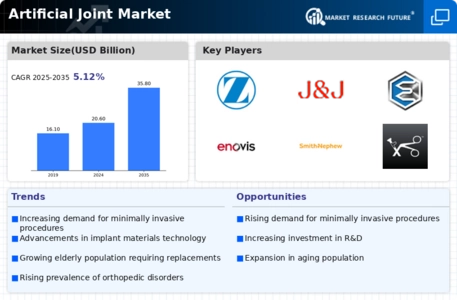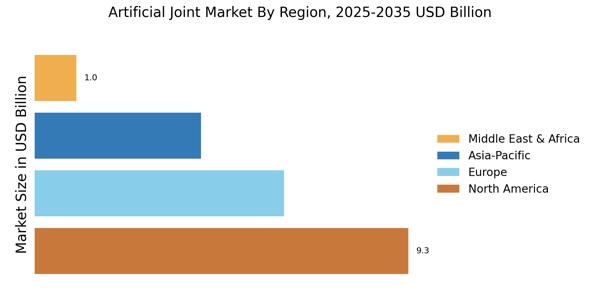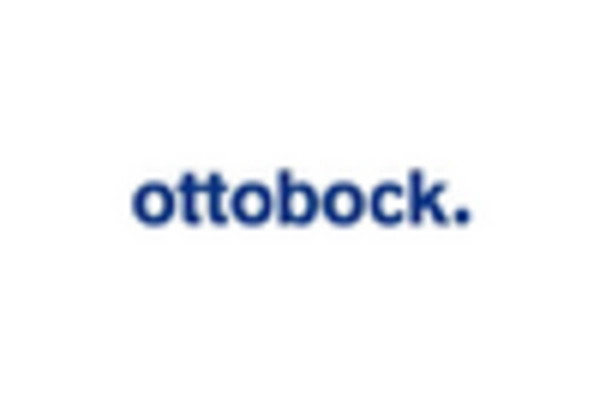Aging Population and Longevity
The aging population is a critical factor influencing the Artificial Joint Market. As life expectancy increases, the number of elderly individuals requiring joint replacement surgeries is also on the rise. It is estimated that by 2030, nearly 20% of the population in many developed countries will be over the age of 65, leading to a higher incidence of joint-related issues. This demographic shift is likely to create a sustained demand for artificial joints, as older adults often experience degenerative joint diseases. Consequently, the Artificial Joint Market is expected to expand significantly to accommodate the needs of this growing segment of the population.
Increasing Healthcare Expenditure
Rising healthcare expenditure across various regions is significantly influencing the Artificial Joint Market. As countries invest more in healthcare infrastructure and services, the accessibility of joint replacement surgeries improves. This trend is particularly evident in emerging economies, where increased spending on healthcare is facilitating better access to advanced medical technologies. Reports indicate that healthcare spending is expected to reach over 10 trillion dollars by 2025, which could lead to a surge in demand for artificial joints. Consequently, the Artificial Joint Market is poised for growth as more patients seek surgical interventions to alleviate joint pain and improve mobility.
Rising Prevalence of Joint Disorders
The increasing incidence of joint disorders, such as osteoarthritis and rheumatoid arthritis, is a primary driver of the Artificial Joint Market. As populations age, the prevalence of these conditions rises, leading to a greater demand for joint replacement surgeries. According to recent estimates, approximately 27 million adults in the United States alone suffer from osteoarthritis, which significantly impacts mobility and quality of life. This trend is mirrored in various regions, suggesting a consistent need for artificial joints. The Artificial Joint Market is likely to experience growth as healthcare providers seek to address this rising demand through innovative solutions and improved surgical techniques.
Growing Awareness and Patient Education
The growing awareness of joint health and the importance of timely interventions is driving the Artificial Joint Market. Educational campaigns and initiatives by healthcare organizations are informing patients about the benefits of joint replacement surgeries. This increased awareness is likely to lead to more individuals seeking treatment for joint disorders, thereby boosting the demand for artificial joints. Additionally, as patients become more informed about their options, they may be more inclined to opt for surgical solutions rather than conservative treatments. This shift in patient behavior is expected to positively impact the Artificial Joint Market, as more individuals pursue joint replacement surgeries.
Technological Innovations in Joint Replacement
Technological advancements in joint replacement procedures are transforming the Artificial Joint Market. Innovations such as minimally invasive surgical techniques, robotic-assisted surgeries, and advanced materials are enhancing the effectiveness and longevity of artificial joints. For instance, the introduction of 3D printing technology allows for customized implants tailored to individual patient anatomy, potentially improving surgical outcomes. Furthermore, the market for artificial joints is projected to grow at a compound annual growth rate of around 6.5% over the next several years, driven by these technological improvements. As these innovations continue to evolve, they are expected to play a crucial role in shaping the future of the Artificial Joint Market.

















